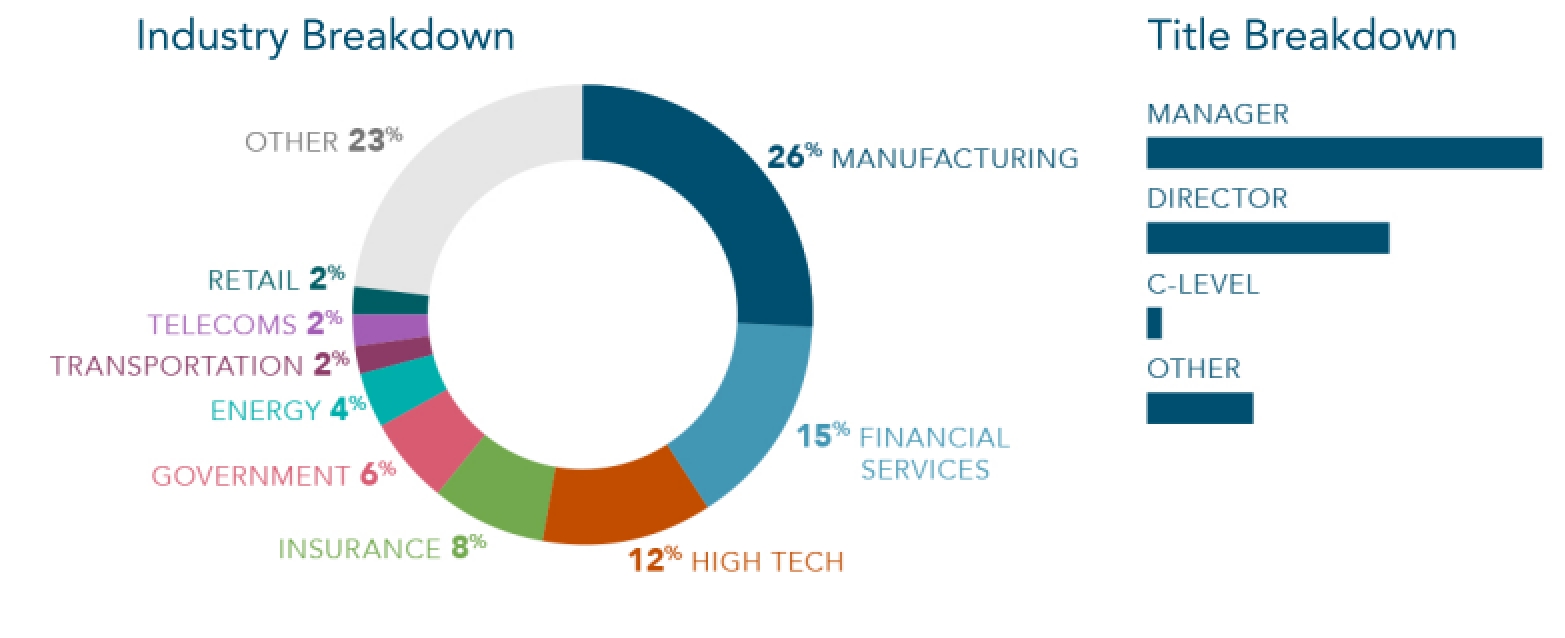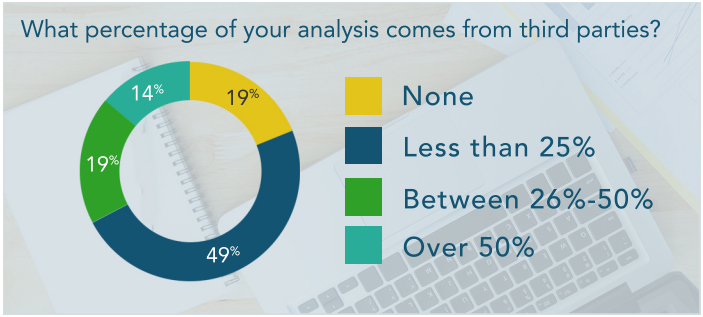Insights & Implications for Organizations Aspiring to be Analytically Driven
The adoption of business analytics by organizations across the globe is accelerating, and with good reason. In today’s complex business market, analytics can offer a competitive advantage by helping to identify growth opportunities, circumnavigate risk and improve customer relationships. And while businesses of all sizes understand the role analytics plays within the organization, most are unclear of the attributes that define an analytically driven enterprise.
In order for the analytics function to effectively deliver the types of insight that plays a critical role in the decision-making process, they must be able to share the information with the right people and make sure those in power recognize the value it holds for the enterprise as a whole. Ultimately, the analytically-driven enterprise is one where analytics is seamlessly woven into the fabric of the entire business.
To shed light on how companies perceive themselves to be analytically driven and better understand the challenges they are facing, Dun & Bradstreet surveyed a diverse cross-section of business professionals about their analytics strategy. What we uncovered is an analytics practice that shows tremendous promise but still needs time to evolve and mature to truly benefit the enterprise. A key finding was that, all too often, analytics lives in silos and is not being maximized for its full business potential.
We hope this insight into how your colleagues and peers are managing analytics provides a benchmark for you to measure where your organization stands on the path to being analytically driven. But most importantly, we want you to use this research to spark a dialogue with your teams about how you may improve the use of analytics across your enterprise.
About the Analytics Survey
This report highlights the key findings from Dun & Bradstreet’s survey of more than 100 business professionals who focus on analytics in their day-to-day job. As analytics influences every aspect of business, it was important for us to engage active stakeholders across a diverse cross-section of industries and verticals at all levels. Conducted via email over a three-week period in March 2016, the survey yielded responses from different departmental functions of varying sizes across several industries.

Who is Most Likely to Use Business Analytics
Data analytics can help organizations extract meaningful insights and maximize the potential of data through a range of descriptive and predictive evidence. Therefore, today’s forward-thinking organizations don’t just want to collect data, they want to uncover truth and meaning from it. So we wondered, how many think of themselves this way?
Not surprisingly, almost two-thirds of responders consider themselves to be working for an analytically driven company, meaning they rely on data and insights to drive business decisions. We also wondered if the term analytically driven meant the same for one company as it did for another. The definitions we received all pointed to the same conclusion: data analytics is about creating actionable insights.
Who is Not Using Analytics to Understand Their Business
Why are some companies not willing or ready to embrace analytics to drive business insights? When we look at the breakdown of those that answered no, we see the highest proportion (32%) comes from the manufacturing industry. This should come as no surprise when you look at external market trends.
The definition of analytics for manufacturing differs from the traditional approach industries like finance and marketing have taken to uncover new insights. For some—like the finance sector, which was the largest industry to consider themselves analytically driven—insights derived from analytics comes from looking at the past to predict the future. Simply asking a question like “What did customer X do before?” may yield pretty reliable assessments that can help determine risk, weigh outcomes and quantify costs. But for other industries, like manufacturing, analytics can be more complex than simply observing historical behavior and signals to infer evocative business decisions. That is not to say industries like financial services cannot benefit from deeper analysis as well, but all too often executives drive their analytic teams to grasp “low-hanging fruit” and deliver insights that are easy to come by. Unfortunately, too many companies have this narrow view of data and what they can ask analytics to accomplish. Analytics should not just tell you what you want to know, it should present answers to questions you’ve never even thought of asking.
According to a 2013 KPMG study, “Many manufacturing executives (49% globally; 54% U.S.) admit that their companies cur companies currently do not have visibility of their supply chain beyond Tier 1 suppliers. Moreover, only 9% say they have complete visibility of their supply chains.” Could advanced analytics help address this? Definitely. But with limited transparency into these relationships, it’s no wonder the manufacturing sector feels less able to deliver analytically driven insights to decision makers.
Third Party Analysis Enhances Business Insights

So what are the other half doing if not developing insights to help drive better outcomes? Analytical modeling is the key to predicting outcomes to business decisions and represents the lifeblood of any modern analytics function. Just giving reports with numbers doesn’t help. But, with some external research indicating that 80-85% of business executives who claim to understand analytics actually don’t, they might be satisfied employing a bunch of statisticians who can simply crunch numbers. But that only gets you so far. Today’s analytically driven organization needs to be “all in” with analytics professionals who can master the art and science of analytical modeling.
In the meantime, organizations need to look elsewhere for some level of support to meet their desired goals. Whether it’s getting more data to enrich what is already on hand, or looking for external analysis that can help steer them to better outcomes, we’re seeing third parties play a role in their day-to-day operations.
Whether the team is small or large, there is at least some reliance on third parties for analysis, with 81% of responders claiming at least a portion of their analysis comes from third parties, though it is not much. Only 14% said more than half of their analysis was from third parties.
Where are Third Parties Most Helpful for Advanced Analytics

Because organizations have diverse goals and objectives, there are different levels of complexity each analytics function must tackle. In many cases it’s not about the capability of the team, it’s about the capacity of the team. No matter how sophisticated and large the team may be, they don’t want to spend their time and resources solving the analytics problem, they want to solve their business problem. This is where many third party resources come in; to help in; to help them form insights from truly complex scenarios.
While not all organizations rely entirely on third parties for general analysis, there are some areas where third parties are seen as adding value that cannot be met internally including understanding supplier risk (30%), which happens to be the area that responders identified as being least mature, identifying new market opportunities (28%), defining potential customers (28%), and help processing unstructured data (26%). Machine learning (7%) was on the bottom of the list of areas where organizations would be interested in going outside for help.
Again, the recurring theme we are seeing is a need for help to get at greater problems that cannot be wholly addressed simply by looking at data through a narrow lens of what already exists and had been collected. There is a demand to gain a deeper understanding from data that is not always known or readily available, as well as a desire to seek help to form insights that the existing team may not necessarily be set up to generate.
The acknowledgement that not everything can be met with internal resources alone, is a step in the right direction for an analytically driven organization.
Current State of Enterprise Analytics
Data analytics has clearly reached a tipping point. As the results of this study illustrate, a majority of organizations claim to be analytically driven, though there is still ambiguity in how analytics is leveraged and disseminated across the enterprise. In defining the term, it is apparent everyone agrees that analytics is key to guiding the organization in the right direction in terms of maximizing revenue—whether it is identifying new opportunities or pointing to costly risk. But it seems many companies have only scratched the surface of what analytics is capable of delivering.
Download the full report to learn how companies like yours view themselves in light of using analytics to drive their business.
